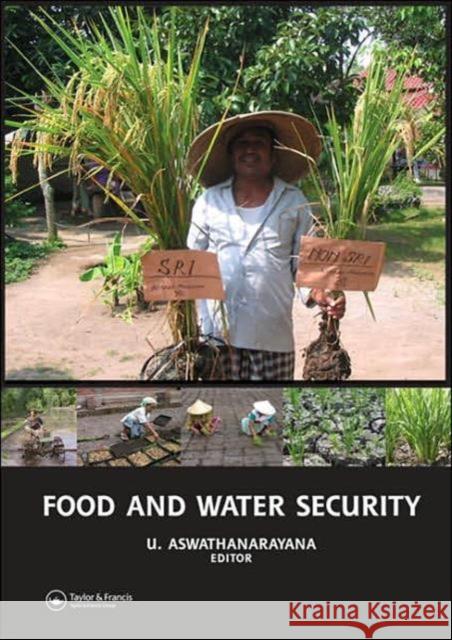Food and Water Security » książka
Food and Water Security
ISBN-13: 9780415440189 / Angielski / Twarda / 2007 / 360 str.
Food and Water Security
ISBN-13: 9780415440189 / Angielski / Twarda / 2007 / 360 str.
(netto: 831,06 VAT: 5%)
Najniższa cena z 30 dni: 856,36
ok. 22 dni roboczych
Bez gwarancji dostawy przed świętami
Darmowa dostawa!
This book deals with ways and means of managing food and water security in various agroclimatic environments through the integration of R & D, training, people participation, agronomic practices, economic instruments, and administrative policies. It includes contributions by global experts in the field, who elaborate on the governance of food security, the biophysical dimensions of more food per drop, as well as on the socioeconomic dimensions of food security. Subjects are presented grouped in three sections: 1. Biophysical Dimensions of Food Security; 2. Socioeconomic Dimensions of Food Security and 3. Governance of Food Security in Different Agroclimatic and Socioeconomic settings. Recommended reading for professionals, water and agricultural scientists, engineers, planners and policy makers in the field of food and water security.
The UN Millennium Summit of 2000 pledged to halve by 2015 the 850 million undernourished people in the world. Food Security has two principal dimensions: Food Production, and Food Consumption, both of which have to be economically viable in order to be sustainable. Food security is critically dependent upon optimizing the use of soil and water. Food availability is a necessary, but not a sufficient, condition for food security. Food security at the aggregate level may not necessarily translate into food security at the family level. The key challenge of growing more food with less water has both science-based and people-based dimensions.
This volume deals with ways and means of managing food and water security in various agroclimatic environments through the integration of R. & D., training, people participation, agronomic practices, economic instruments, and administrative policies. It includes reviewed contributions by global experts in the field, who elaborate on the governance of food security, the biophysical dimensions of more food per drop, as well as on the socioeconomic dimensions of food security. This volume is recommended reading for professionals, water and agricultural scientists, engineers, planners and policy makers in the field of food and water security.











